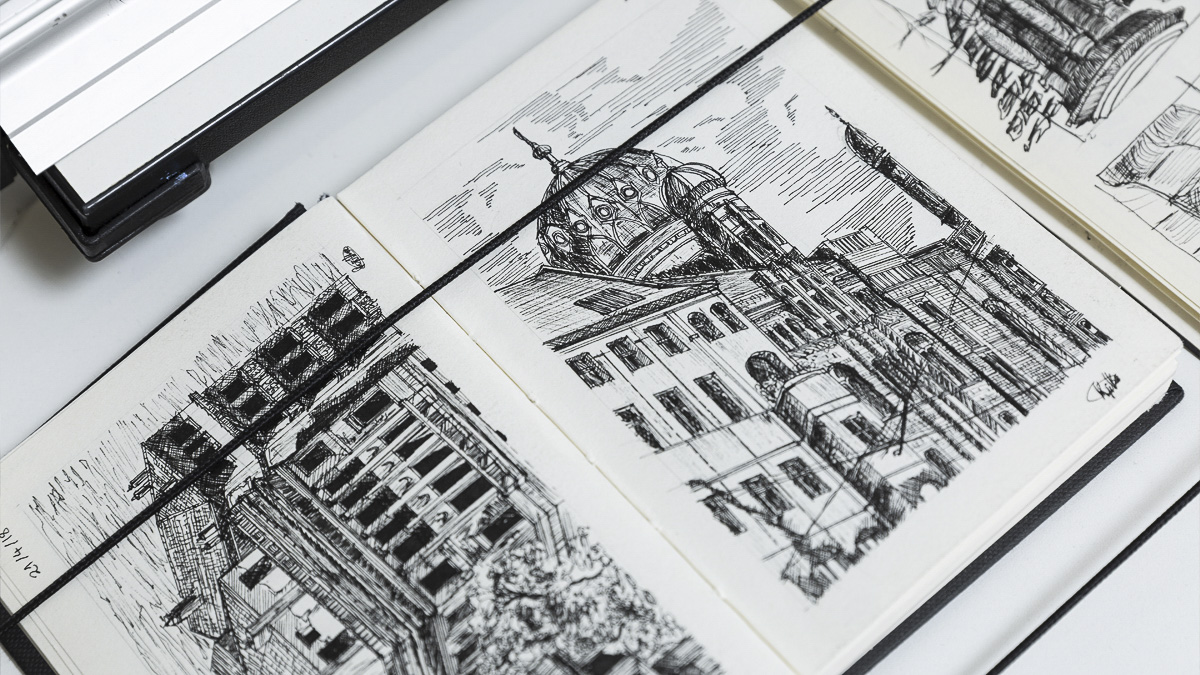You should first submit your application, including your personal statement, to UCAS. The University of Reading will assess the application and eligible candidates for our BSc (Hons) Architecture course will receive an email inviting them to submit a digital portfolio of their work as part of the application process. Following review of this portfolio you may be made an offer directly or you may, additionally, be invited to an interview.
Your application
Your portfolio
Your portfolio should demonstrate creative thinking as well as technical ability. There is no expectation of any prior digital drawing skills.
Freehand skills are valued in architecture, therefore sketches showing creative thinking and ideas are particularly relevant, as well as 3D work such as sculpture or models.
Typically our applicants will be studying art or design A-level subjects (or equivalent). We will also consider applicants following courses of study that do not include art or design but that engage our physical or social environments, such as geography and philosophy, for example. These students need to demonstrate their interest and skills in art or design beyond their formal studies. All applicants are invited to share their interest in seeing, interpreting and communicating the world around them through drawing, alongside their other visual interests, in their digital portfolio.
Specific guidelines
- Your portfolio should be a pdf between 15-20 pages in length and contain pieces of work that best show your ability with a broad range of representational techniques.
- Your portfolio should be presented clearly. Please carefully curate the content, including headings and annotation where necessary.
- Be selective and consider pieces that best highlight skill and reflect your interests – note that portfolios that include too much information can lose focus.
- Where possible, highlight development work that leads to a final piece as process work is valued highly. We do not need to see everything – be selective and curate the portfolio with care.
- Freehand skills are valued in architecture, therefore sketches showing creative thinking and ideas are particularly relevant. If you have drawings or other graphic representations which have been developed using any type of software, these can be included.
- Your portfolio may comprise materials from an art or design-related A level, or other relevant work. You can include work created in your own time as well as work produced on creative courses.
- Please include photographs of physical works such as paintings, models, 3D work, etc. Images should have a clear title and date of completion. If the size of the work is not obvious, please state this in a caption.
Think about what your portfolio communicates to the viewer. It should demonstrate your flair for creative thinking in the medium you have chosen, as well as your 3D understanding and technical ability. It should contain a mixture of 2D and 3D pieces. Your portfolio may reflect a breadth of different media which you have experimented and worked with or a depth of skills in specific forms of representation or both.
Important: If an image by another artist is used for inspiration (for example, when showing development work), please be sure to credit the artist. Any group work should be similarly noted with your specific contribution made clear.
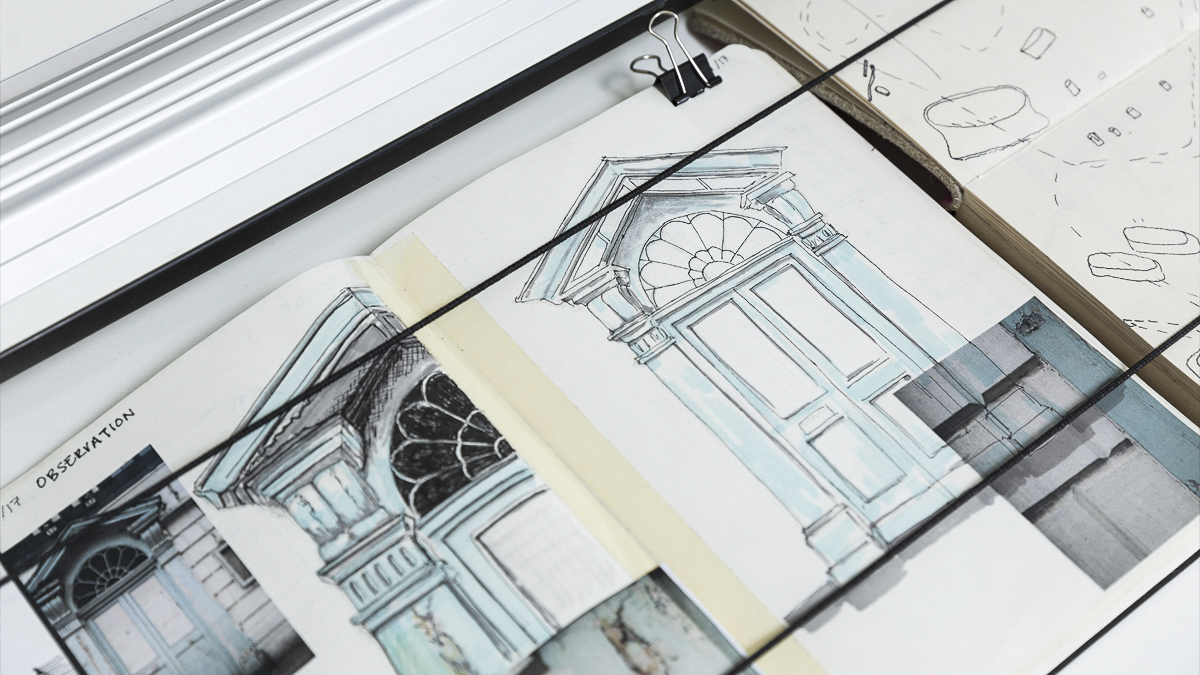
We look for a range of different creative skills, which may include:
- scanned sketches / process work
- photos of work in progress
- creative writing
- precedent studies or case studies
- concept sketches
- hand-drawn sketches of places, spaces or buildings
- life drawing
- photographic studies
- collage or mixed media works
- paintings
- abstract art works
- analytical drawings/mapping drawings
- orthographic drawings (such as plans, sections and evaluations)
- measured drawings
- computer-aided design (CAD)
- images made in Photoshop or other software
- graphic design
- product design
- website design (include screenshots)
- original small-scale 3D work: sculpture, installations, models
- photographs of physical models.
This list is not exhaustive and if you have work that shows your creative skills which are not listed, we encourage you to include such work.
Submitting your digital portfolio
Please send your digital portfolio to the Admissions Support team within 2 weeks of receiving the email inviting you to submit a digital portfolio.
Your digital portfolio should be submitted as a single PDF file, with a file name that begins with your Reading ID number followed by your name.
Important: by submitting your portfolio you confirm that all work is your own unless you have indicated otherwise directly adjacent to the work (for example, including an artist’s original piece as inspiration or development). See guidance notes above.
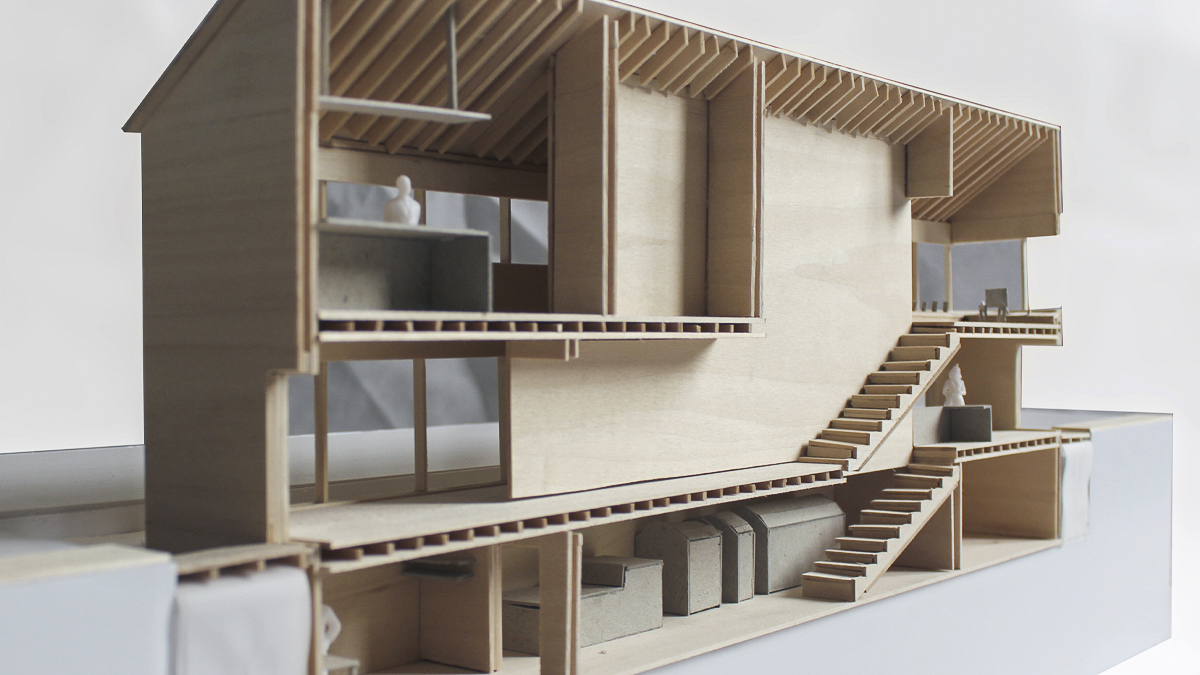
What happens following portfolio submission?
Your digital portfolio will be reviewed by the School of Architecture alongside other information on your UCAS application form (qualifications, personal statement, etc.). A decision will then be made on your application.
You may be invited to attend an interview following our review of your portfolio or you may be made an offer directly. Dates will be made available for either an on-campus interview or an online interview.
Once the School of Architecture has made a decision on your application, the Admissions team will contact you to let you know the outcome. If successful, you will also be sent details of any upcoming offer-holder days.
Questions?
Please contact the Admissions Support team if you have any questions about preparing or submitting your digital portfolio.
Free Online Course to help with your interview
We have develop a free online course, Stress-Free University Interviews available to students who have offers of interviews at the University for interviewing subjects. It will help you make the most of your skills, build confidence and enable you to practice those all important interview techniques.

Sketching and sketchbooks
Although sketching can be used at all stages of the architectural process, it is most commonly employed at the initial conceptual stages. Sketching is about communicating ideas.
Sketches shown within your portfolio should display a collection of your ideas and design narratives, for example a combination of visual notes developed through observation and theoretical ideas.
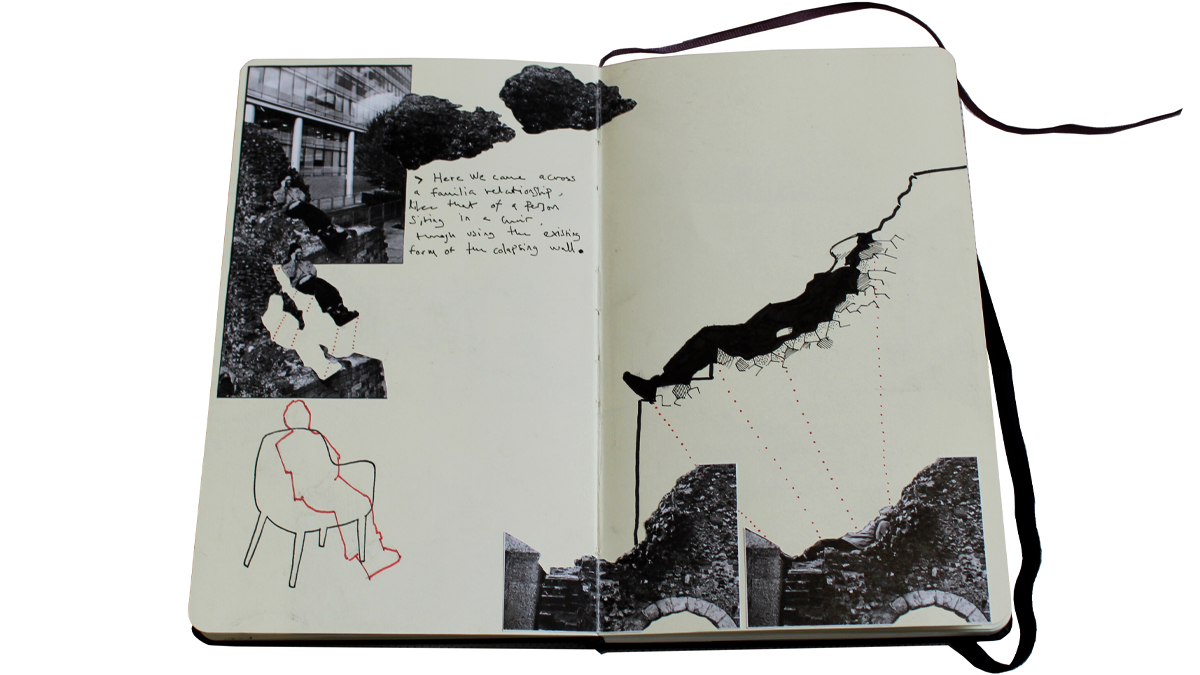
Conceptual sketches
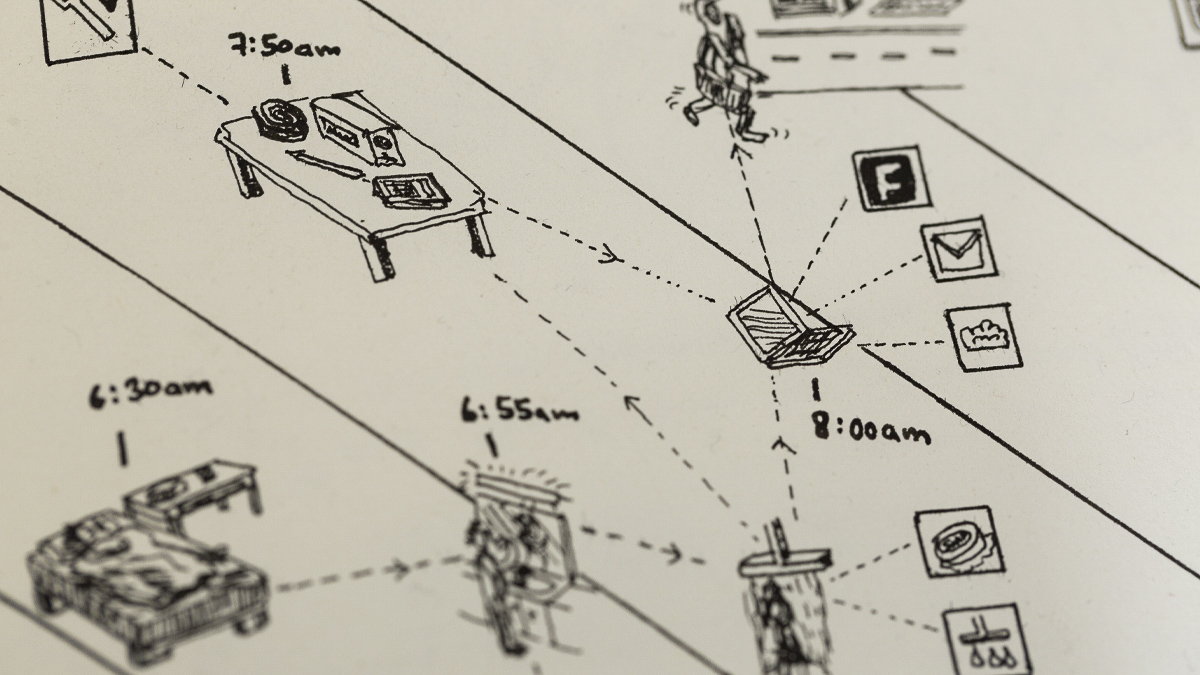
Analytical sketches
